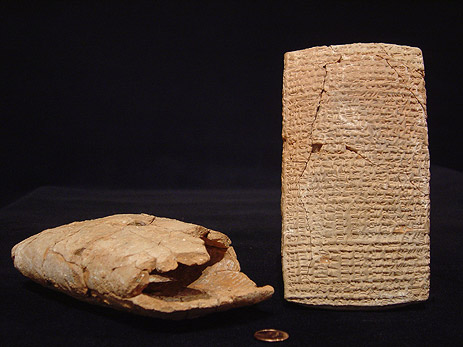Image Resource Bank
Image Gallery |  11 of 15
11 of 15 
Clay Tablet and Envelope
Often, tablet such as letters and certain legal documents were encased in “envelopes” of clay, protecting the tablet from damage and tampering. This is a tablet written in Akkadian that records the outcome of a legal case regarding a dispute between two men who claimed to own the same piece of land. The judges ruled in favor of the man who could provide documentation supporting his claim. Court officials also rolled their cylinder seals across the tablet and envelope, ensuring that the information was indeed correct.
Not everyone in Mesopotamia was literate. Learning to write took a good deal of education and throughout the course of Mesopotamian history it became more of an elite identity. In later periods, scribes even trace their scribal heritage back to ancient ancestors, and ancient scholars are considered to be advisors to the king. There were many opportunities for different scribes to work. They could work with economic texts, legal documents like the one here, letter, and literary texts among others. They also could work in various spheres of society whether in the temple, palace, or the economic spheres.
Name: Clay Tablet and Envelope
Material: Baked Clay
Size:
Tablet:
Length: 17.8 cm (7 in),
Width: 9.3 cm (3.7 in)
Envelope:
Length: 18.3 cm (7.2 in),
Width: 11.5 cm (4.5 in)
Date: 2nd half of the 15th century BCE
Place of Origin: Nuzi, Iraq
Location: Oriental Institute Museum, Chicago, Illinois
Source and Registration#: Oriental Institute Museum A11878 Link to resource![]() (accessed May 7. 2010).
(accessed May 7. 2010).

 Jennie Myers
Jennie Myers
Research Associate, University of Chicago




